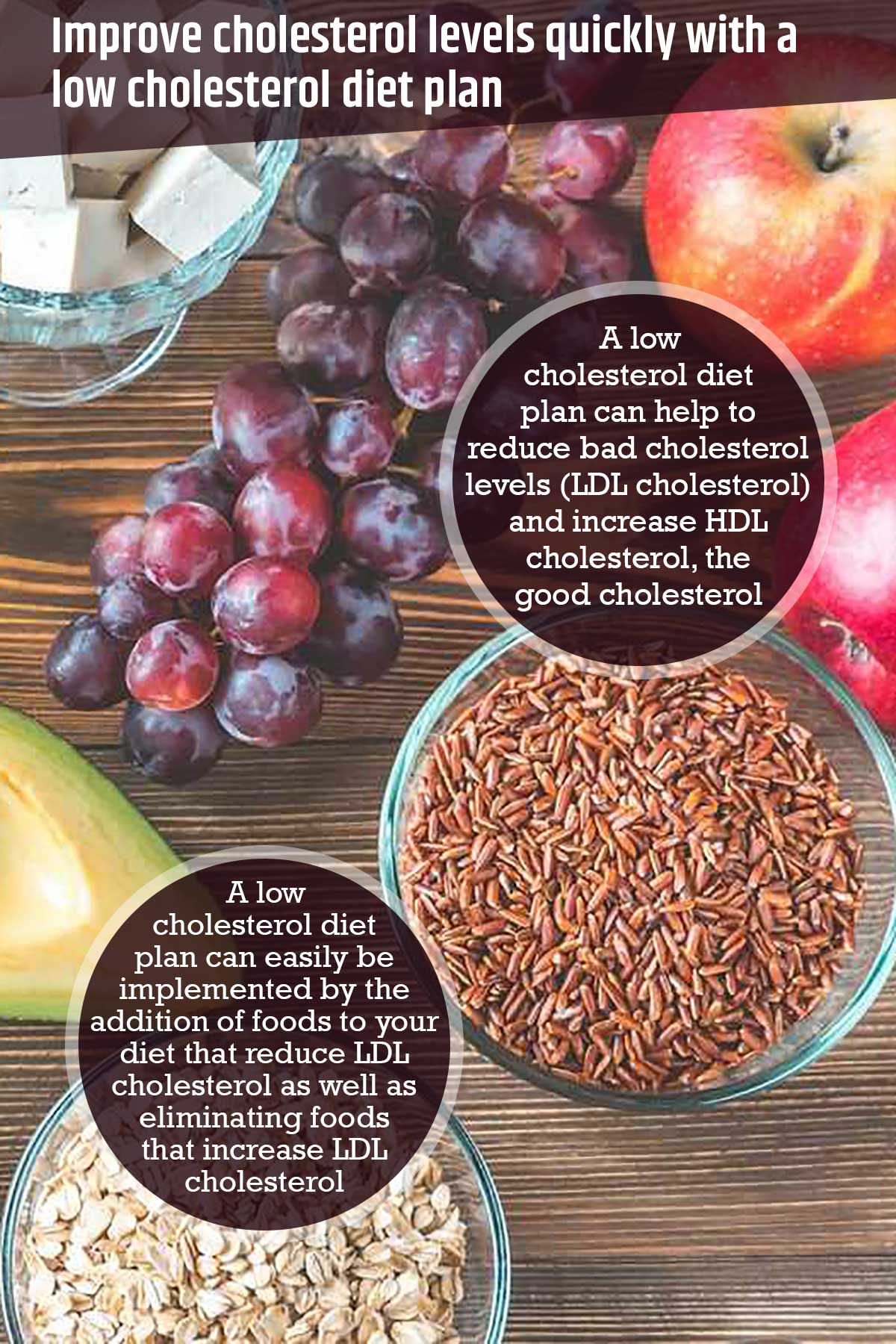A low cholesterol diet plan can help to reduce bad cholesterol levels (LDL cholesterol) and increase HDL cholesterol, the good cholesterol.
A low cholesterol diet plan can easily be implemented by the addition of foods to your diet that reduce LDL cholesterol as well as eliminating foods that increase LDL cholesterol.1✅ JOURNAL REFERENCE
PMID: 12485966
1. Reduce consumption of meat and increase consumption of plant foods
Cholesterol can be found only in foods from animals, and not in plant foods. Reducing the amount of meat in your meals and increase the amount of whole grains and vegetables to compensate if needed. Replace beef, pork or lamb in meals with fish or chicken.
2. Reduce consumption of saturated fats
The fats underneath chicken skins, lard, bacon fat or the fat from a piece of prime rib of beef are saturated fats, and they are considered “bad” fats because they increase LDL cholesterol.
- Choose lean cuts of meat. Beef cuts which are lean are the sirloin, round and chuck. Pork cuts which are lean are the loin chop. Lamb cuts which are lean are from the loin, arm and leg. Select USD A graded cuts of beef and lamb marked Choice and Select. These cuts are leaner than Prime.
- Bake or broil rather than frying meat.
- Bake or broil meat over a rack, so that the fat can drain off into a pan.
- Before cooking, trim all visible fat from the meat.
- Place homemade stews and soups in the refrigerator after cooking, and then the solidified fat can be skimmed off the top. The same can be done for canned soups that contain fat.
- Choose chicken or turkey instead of duck and goose.
- Take the skin off chicken and turkey before cooking.
- Avoid processed meats, which are usually high in saturated fat.
- If you are on a cholesterol lowering diet plan, eat organ meats such as liver, kidney and brain very seldom, as they are very high in cholesterol.
3. Reduce consumption of dairy foods
The fats in butter, milk and cream are saturated fats. Reduce the amount of dairy fat. Use Low-fat or fat-free milk instead of whole milk. Use low-fat cottage cheese and other low-fat cheeses.
4. Increase consumption of soluble fiber
Increasing consumption of soluble fiber found in whole grains helps to lower cholesterol. Good sources of dietary soluble fiber include oatmeal and oat bran, kidney beans, Brussels sprouts, pears and apples. Use brown rice instead of white rice and use whole grain pasta.
5. Avoid consumption of trans fats
Trans fat acts like saturated fat which raise the level of LDL cholesterol. Avoid commercially baked and fried foods, they contain trans fats. Examples of foods loaded with trans fat are doughnuts, French fries, cookies, muffins, crackers, pies and cakes.
Some margarine also contains trans fats, choose soft margarine over harder stick forms. When eating out choose baked or broiled instead of fried.
6. Consume eggs in moderation
Although the amount of cholesterol in an egg is 14% lower than previously recorded, a large egg has an average of 185 mg cholesterol.2✅ JOURNAL REFERENCE
DOI: 10.1016/j.foodchem.2011.04.058 Reduce amount of eggs consumed, or use egg whites instead of yolks. The cholesterol from eggs is all found in the yolks, egg whites are an excellent source of protein.
7. Use cooking oil high in monounsaturated fats
Monounsaturated fats are fats which help reduce cholesterol levels. Canola oil, Olive oil and peanut oil are rich in monounsaturated fats. Cook with canola or olive oil instead of corn oil.



